I took a 700-mile road trip across Utah and these were the 9 coolest places I visited, plus 5 spots I'd skip next time
Monica Humphries

- In May, I went to Moab, Utah. I rented a car for five days and traveled 700 miles across the state.
- From Moab to Salt Lake City, I made more than a dozen pit stops on my road trip.
Utah is sprinkled with ghost towns, national parks, cool eateries, and unusual roadside attractions. On my five-day trip driving across the state, I tried to cram in as many stops as possible.
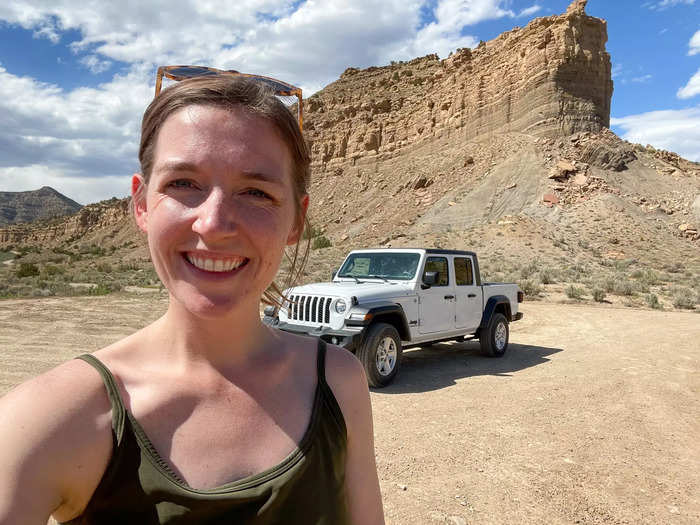
In May, I disembarked the luxury Rocky Mountaineer train and arrived in Moab, Utah.
I rented a Jeep for five days with a plan to explore Moab and its surrounding desert towns, before heading up to Midway, and ending in Salt Lake City.
To break up the driving, I planned my road trip with stops at popular roadside attractions and under-the-radar places.
While I thought most of my road trip stops were worth the mileage, there were a few places I wouldn't stop at again.
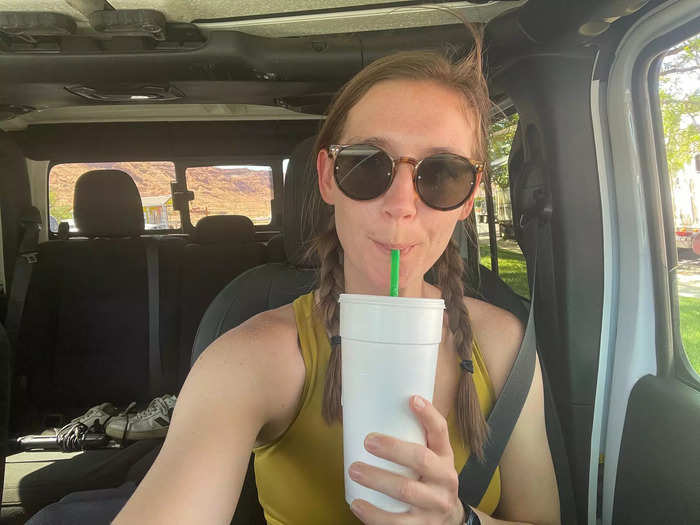
Between eating, hiking, and exploring Utah, there are plenty of places I'm daydreaming about returning to, but there were a few pit stops that I don't think were worth my time.
Here are the places I'd go to again in a heartbeat, and where I'll skip on future travels.
I thought Canyonlands National Park felt like a hidden gem, especially after spending two days in the more crowded Arches National Park.

I entered Canyonlands National Park and immediately wondered where all the people were. That question followed me for the rest of my afternoon in the national park that's located outside Moab.
As I explored the 257,640-acre national park, I parked in empty lots, hiked trails without crossing paths with another person, and saw breathtaking views without seeing another soul.
It was a stark contrast from Arches National Park, where I previously spent two days constantly hunting for parking spots and avoiding people on crowded trails.
In 2019, Canyonlands welcomed 733,996 visitors, according to the National Park Service. That same year, Arches National Park had 1.65 million visitors in a park that's about 180,000 acres smaller in size, according to the same source. So even though I was visiting Canyonlands during its busy season, the park felt more deserted due to its large size and fewer visitors.
I thought the views at Canyonlands alone were worthy of a stop in Utah. But those views coupled with fewer crowds mean I'll come back to this national park over and over again.
In Moab, I thought the Jailhouse Cafe lived up to its reputation as a popular road trip pit stop.
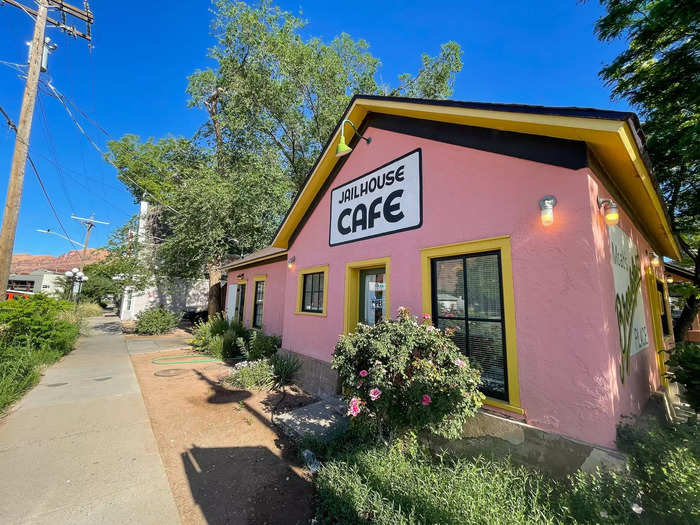
Tucked in an old courthouse, Utah locals told me that the Jailhouse Cafe is a Moab staple when it comes to breakfast. I tried it before heading into Arches National Park, and easily saw why the breakfast eatery attracts both locals and tourists alike.
According to Only in Your State, the building was originally a home. In 1892, it became Moab's county courthouse, and today's kitchen was once the courthouse's jail cell. The current owners purchased the building in 1992 and turned it into the Jailhouse Cafe.
After speaking to shop owners and other Moab residents, I took their advice and ordered two popular dishes: ginger pancakes and southwestern eggs benedict.
It was some of the best food I had during my trip. I thought the two eggs were cooked to perfection and the entire dish had a nice kick, while the pancakes balanced the sweet and spicy flavors of ginger.
After scarfing down the meal, Jailhouse Cafe earned its place on my must-visit list for Moab.
I thought an overnight stop in Utah's little Switzerland was a worthwhile drive.
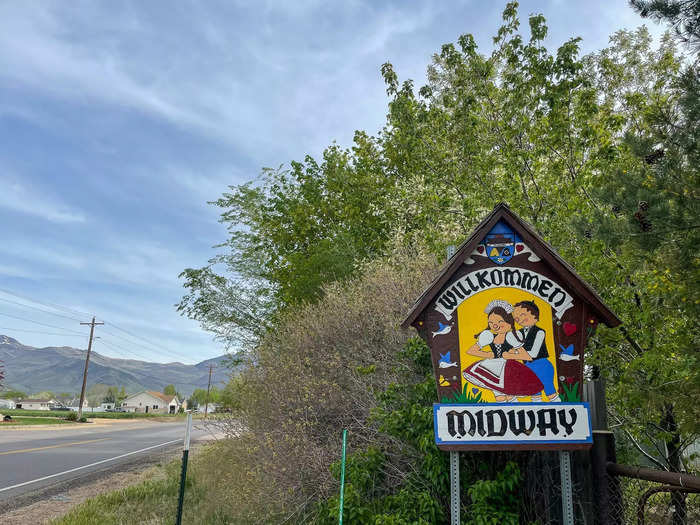
I opted to add an extra hour of driving to my road trip across Utah just so I could spend the night in Midway, which has been dubbed Utah's little Switzerland, according to Only In Your State.
Initially, I wasn't sure the extra mileage would be worth it. But after visiting, I believe it absolutely was.
The town is located just an hour southeast of Salt Lake City. It earned its comparison to Switzerland thanks to the nearby Wasatch mountain range, which Swiss settlers in the 1850s compared to the Alps, according to The Herber Valley Utah.
Today, bits of Swiss culture are sprinkled throughout Midway. I spotted bed and breakfasts that look like Swiss-style chateaus and chalets, and across town, I discovered Swiss-influenced architecture with gabled roofs and ornate, overhanging eaves. And, like in Switzerland, the town is located near some of Utah's best skiing.
While I visited in the spring, I'm eager to return to Midway in the winter, when winter activities are in full swing and the town is blanketed in snow.
In Utah's little Switzerland, I also discovered a swimming hole that was a much-needed escape from the hot desert.
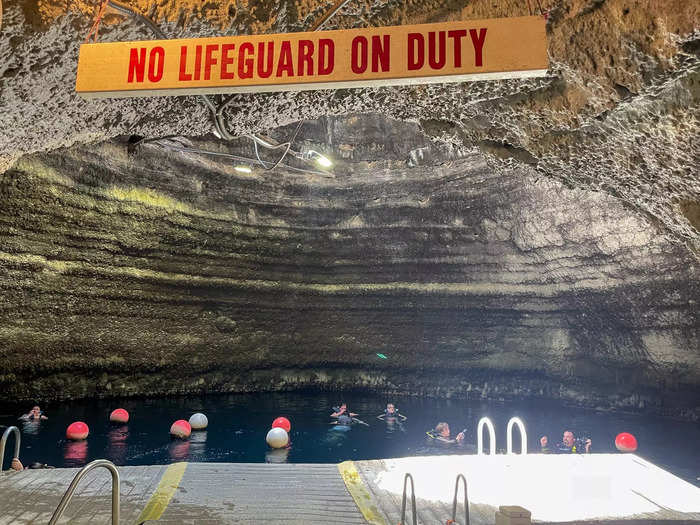
Outside of the Alps-inspired chateaus and chalets, The Homestead Crater is one of Midway's most popular attractions, according to travel blogs like Travel Lens, VacationIdea, and Wanderlust with Lisa.
The crater is a geothermal hot spring that's encapsulated in a limestone dome. Visitors can snorkel or scuba dive in the warm waters, which hover around 94 Fahrenheit degrees year round. And, according to the spring's website, it's the only place for warm water diving in the continental US.
The Homestead Crater's website states that it formed more than 10,000 years ago when melting snow seeped into the earth, where it heated and percolated upward. As the water moved upward, it collected minerals and deposited them on the surface, which formed the volcano-shaped dome.
I opted to go scuba diving one morning on my trip. It cost me about $90, which included entrance into the crater, gear, and a diving partner since I was traveling solo. Insider paid for the diving expenses, per our reporting standards.
I found the experience to be quite refreshing after spending several hot days exploring Moab's desert. On the surface, the water was a crystal-blue color and I thought it had the relaxing temperature of a warm bath.
In my opinion, the only downside was that since no aquatic life lives in the crater, there was not much to view while diving. The next time I'm in Midway, I'll still visit, but I'd likely opt to just swim instead of dive, which costs only $18, or I'd splurge for a $75 paddleboard yoga session in the crater.
No matter what part of Utah you visit, I think that stopping at a pop shop is a must.
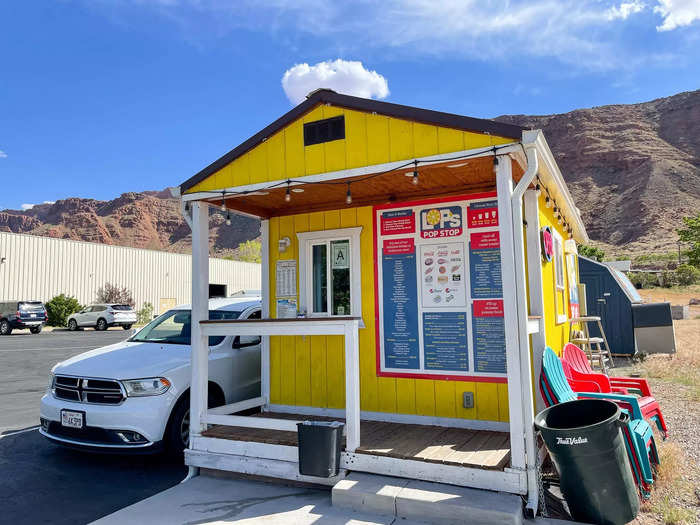
Nearly as popular as drive-thru coffee shops and fast-food chains, Utah is known for its soda shops.
Nearly 70% of people living in Utah identify as a member of the Church of Jesus Christ of Latter-day Saints, according to the World Population Review. Since the church's members are urged not to consume alcohol, tobacco, and hot caffeinated drinks like tea and coffee in the church, according to The Washington Post, some people turned to soda.
In 2012, after the church clarified that cold caffeinated drinks like soda are allowed, soda shops started popping up selling what's been nicknamed "Dirty Sodas," Vice reported.
With soda shops sprinkled across the state, I chose pop more often than coffee during my road trip.
I found the experience of driving up to a soda drive-thru anytime during the day — since many open as early as 7 a.m. — to be simple, cheap, and fun.
The shops offered what felt to me like an endless combination of soda, syrups, and flavors. Plus, a soda never cost me more than $3.14.
I thought it was an iconic Utah experience, and one I think everyone should try.
Insider paid for the soda, per our reporting standards.
A Krishna temple was one of my favorite lunch stops on my way to Midway.
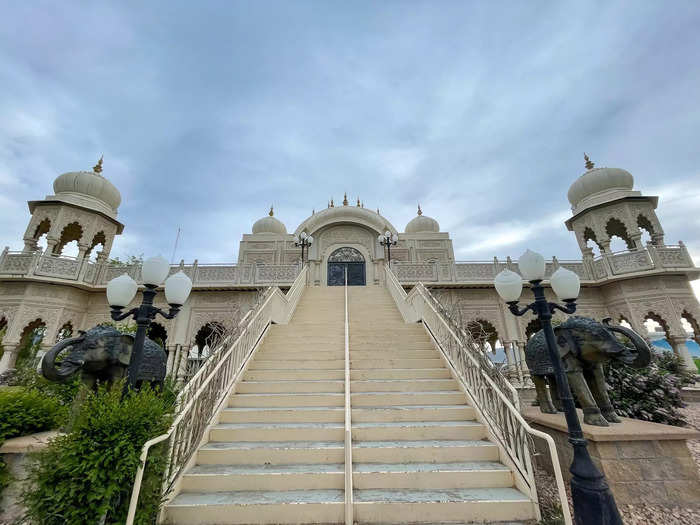
The influence of the Church of Jesus Christ of Latter-day Saints can be spotted across the entire state, but tucked in Spanish Fork Valley, about an hour south of Salt Lake City, is the Hindu Sri Sri Radha Krishna Temple.
It's a Hare Krishna temple that celebrates Hindu devotion. Each year, the temple holds one of the largest color festivals outside India, its website states.
Everyone is welcome to stop and visit the temple, which was built in the late 1900s by Charu Das and Vaibhavi Devi Dasi, a couple that wanted Utah's Hindu population to have a place to worship, according to the temple's website.
As I passed through Spanish Fork, I decided to grab lunch at the temple's vegetarian buffet. For $10, I loaded up on palak panir, Matar paneer, curried cauliflower, and salad. Insider paid for the meal, per our reporting standards.
Beyond a beautiful temple and delicious food, the property also has an animal park with llamas, cows, and peacocks, and offers yoga classes.
If I'm passing through Spanish Fork again, I plan to make another pit stop for either a yoga class or lunch buffet.
If you're looking for a picnic stop or place to stretch your legs, I think the Castle Amphitheater in Provo is the place to go.
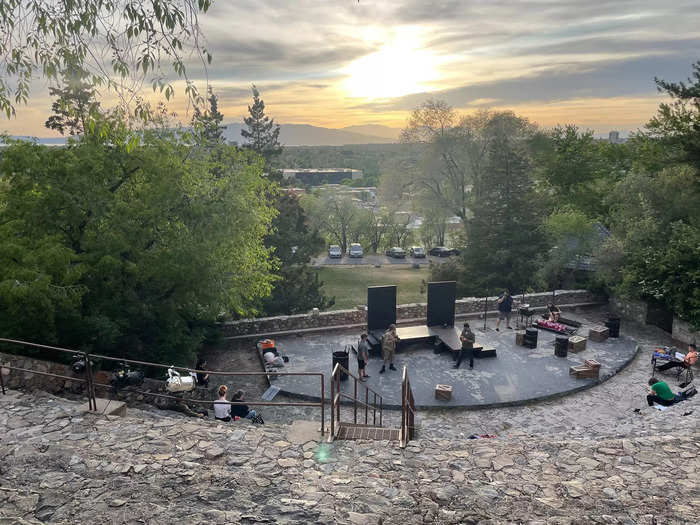
I wouldn't think of castles and hospitals going together, but in Provo, there's a castle-like amphitheater located on Utah State Hospital's property.
As I drove through Provo, which is located 45 minutes south of Salt Lake, I was itching to stretch my legs. I looked for a nearby park, and instead, spotted the amphitheater on the map.
I later learned on Atlas Obscura that the amphitheater, which is sometimes called the Provo Castle, was built as part of the New Deal programs in 1936 as an event space. Today, it's used to host local theater groups, weddings, and other events.
It was a short drive off the highway. The parking lot was on the edge of a grassy park with the limestone amphitheater towering over it.
I walked through the park and navigated my way to the entrance of the amphitheater where a group was practicing a play. According to the Utah Department of Health and Human Services' website, state agencies, the general public, and USH employees can reserve the amphitheater. While the amphitheater doesn't have a website, I did find its Facebook page, where upcoming events are listed and shared.
I grabbed a seat, watched the rehearsal for a few minutes, and then headed back to my car to finish my drive.
While I wouldn't go far out of my way to stop at the Castle Amphitheater, I thought it was an ideal place for a quick break. Next time, I'd probably pack a picnic or grab takeout and plan to spend longer at the amphitheater.
I stumbled into a choir practice by members of the Church of Jesus Christ of Latter-day Saints in Salt Lake and would suggest anyone — no matter their religion — visit.
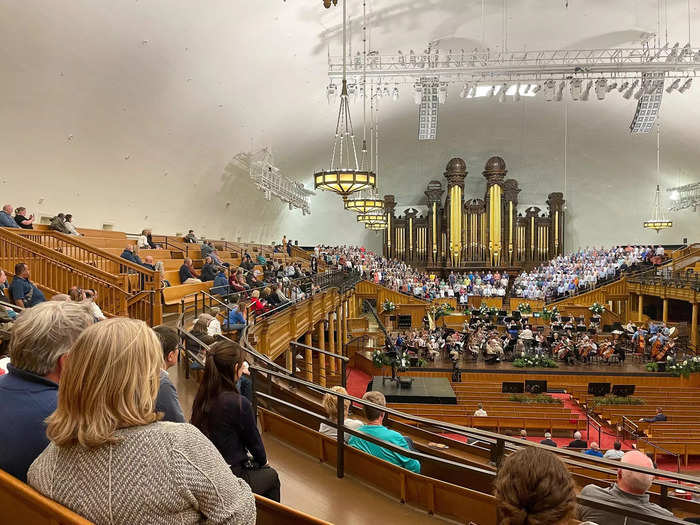
Every Thursday from 7:30 to 9:30 p.m., the Tabernacle choir group in Salt Lake City hosts rehearsals that are open to the public, according to the choir group's website.
I arrived in Salt Lake on Thursday, and the choir practice was starting in just under an hour at the Tabernacle on Temple Square. As the rehearsal began, I observed a slow but steady stream of people who walked into the building to watch.
It was clearly a popular event, and about a half-hour into the rehearsal, I noticed that nearly half the church was filled.
The 360-member chorus of men and women had powerful voices, I thought, and the design of the Tabernacle only amplified their sound.
After spending an hour immersed in the music, I understood why so many people flock to these rehearsals every week, and if I ever happen to be in Salt Lake on a Thursday, I'd make an effort to visit again.
I thought the Iosepa ghost town was well worth a stop.
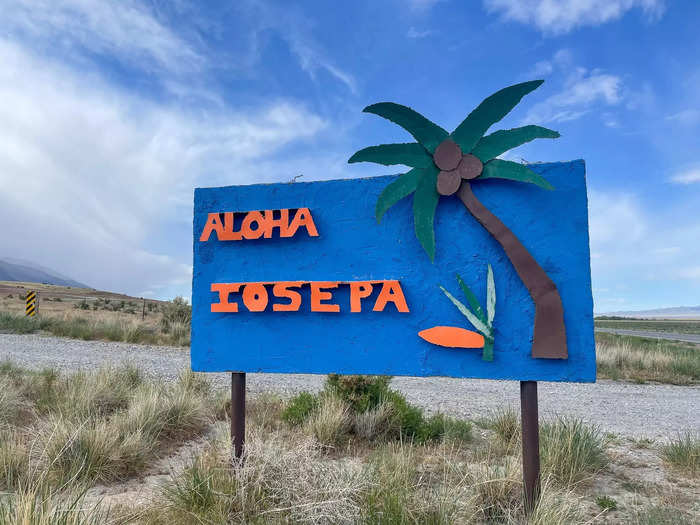
One of Utah's most famous ghost towns is Iosepa, which was designed to be an oasis for Hawaiian followers of The Church of Jesus Christ of Latter-day Saints after they were pushed out of Salt Lake City in the 1880s.
The abandoned settlement is about an hour outside of Salt Lake, so I spent one morning exploring the property.
While I didn't find much more than a cemetery, I was engulfed by the ghost town's history.
In the 1880s, 46 Hawaiians left their homes to travel to Utah for religious reasons. After being pushed out of Salt Lake City, they relocated to the desert where they managed to grow to a population of 228. While in Iosepa, they maintained their Hawaiian language, culture, and traditions, Insider previously reported. After the announcement that a temple was going to be built back in Hawaii, the majority of the settlers abandoned Iosepa and returned home.
As I explored Iosepa I was amazed by the settler's resilience. The history and stories I learned from the deserted plot of land I found were worthy of a pit stop.
On a return trip to Moab, I'll skip visiting Arches National Park due to large crowds.
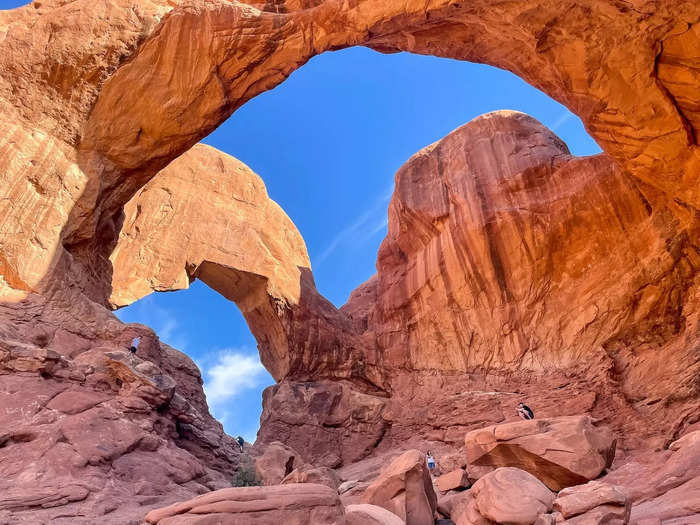
Don't get me wrong, Arches National Park is a must for any first-time trip to Moab. The 76,000-acre park is home to more than 2,000 natural arches, otherworldly land forms, and expansive views.
And while I had a blast exploring the geological wonderland, I'll skip it on my next visit.
Mostly because I thought it was crowded and complicated to enter. I experienced crowds and had to contend with the hassle of needing a timed reservation to enter the park. Next time, I'll opt for one of the less-crowded parks in Southern Utah like Dead Horse Point State Park or Canyonlands National Park, both of which don't require a reservation.
If you do decide to visit, don't make the mistakes park rangers often see in the national parks, like expecting solitude or forgetting to pack enough water.
I thought seeing thousand-year-old art in Thompson Springs would be incredible, but wished more information was available.
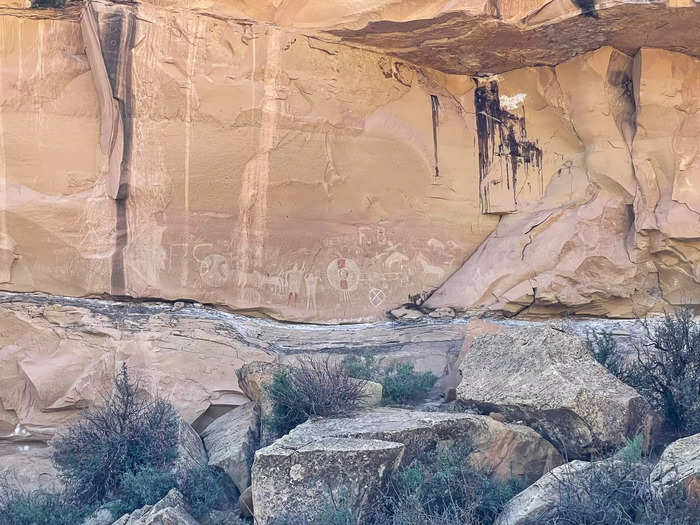
Thompson Springs, which is about a 45-minute drive north of Moab, is home to a set of petroglyphs called the Sego Canyon Rock Art.
According to Atlas Obscura, the petroglyphs and pictographs were created by three Indigenous tribes, the Utes, Fremont, and Archaic groups, thousands of years ago.
I've never seen petroglyphs before, so when I learned Sego Canyon was within driving distance from Moab, I added it to my list of pit stops.
When I arrived, I saw faint petroglyphs that I could only view from a distance. Since I couldn't get close to the rocks, I strained my eyes to view the faded petroglyphs and pictographs. I could hardly spot what historians believe are images of horses, pale white circles representing shields, and humans.
Nearby, there were signs with what I imagine once housed information on the rocks. Today, they are worn down, sun-bleached, and illegible.
Without cell service and any information at the site, it was hard to appreciate and contextualize what I was seeing. If more information had been provided on the petroglyphs, I think it may have been worth the drive.
Next time I'm near Moab, I'd skip the Sego Canyon Rock Art and stop at Newspaper Rock instead, which is about 50 minutes south of Moab. According to Atlas Obscura, this set of petroglyphs is one of the world's largest collections and looks much more vivid than the ones I saw in Thompson Springs, based on pictures I've viewed online.
I'd also skip visiting the ghost town, Home of the Truth, unless I was near the southern entrance to Canyonlands.
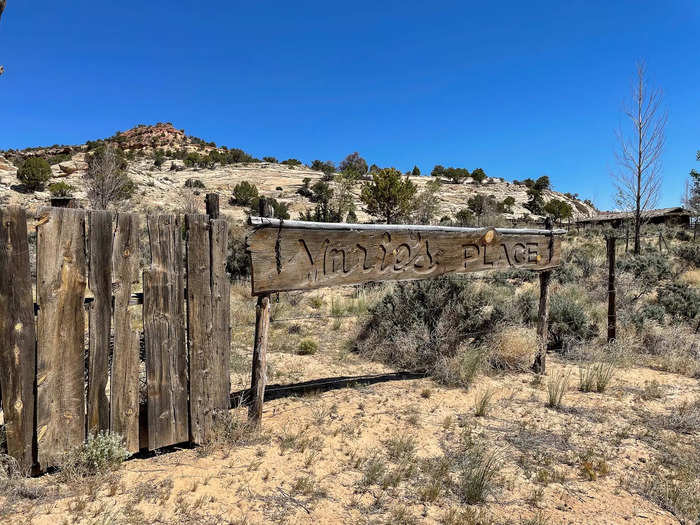
Home of the Truth's origin story is the most fascinating ghost-town story I've heard. The town was built in 1933 by Marie Ogden. After her husband died, she believed she was receiving messages directly from god, instructing her to build a colony to survive the imminent end of the world.
The community didn't last long. Ogden managed to gather about 100 followers, but by 1937, seven people remained after the colony received bad press, Atlas Obscura reported.
The ghost town is located 40 minutes from Moab and near the south entrance to Canyonlands National Park.
Today, the ghost town is privately owned, so people can only view the remaining buildings from a distance. I explored the perimeter of the land, but I couldn't spot much more beyond a few crumbling cabins.
I think my time would've been better spent reading, researching, and imagining the life Ogden aimed to create for her followers.
If you're heading to the south entrance of Canyonlands National Park, I think it's worth it to take a moment to look since it's on the same road. But I can't say I'd make the 40-mile trek out to the ghost town again.
I stopped at an abandoned mine in Spanish Fork but I could only see it from a distance.
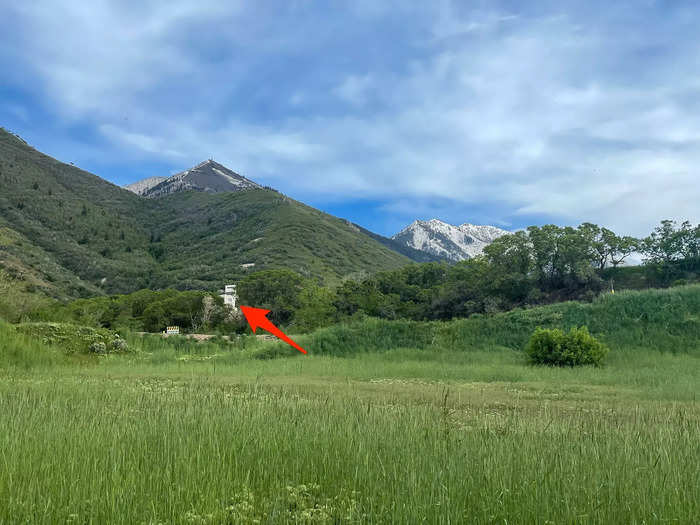
As an avid ghost-town explorer, a handful of my pit stops revolved around stopping at Utah's abandoned mines, deserted settlements, and empty, eerie hotels.
So when I read about the Dream Mine in Spanish Fork on Atlas Obscura, I knew I wanted to visit. The mine, which is located about an hour south of Salt Lake City, was purchased by John Hyrum Koyle in 1894 after he received a message from an angel who instructed him to purchase an already-abandoned mine, according to the same source. In 1947, Atlas Obscura reported that Koyle said he was forced to sign a statement that admitted his prophecies were false, and eventually, the mine was re-abandoned.
I plugged in the Dream Mine on Google Maps, which led me to a gated road. I turned around and tried another route to get closer to the Dream Mine. The second route also was blocked off. After failing for the third time, I got the sense that the owners don't want visitors getting close to the abandoned mine.
So I gave up and viewed the mine from a distance. While I could spot the bright-white building, I thought the far-away views weren't worth the time it took me to get there.
While I enjoyed my breakfast in Moab, I'd skip the town's famous fine-dining Sunset Grill next time.
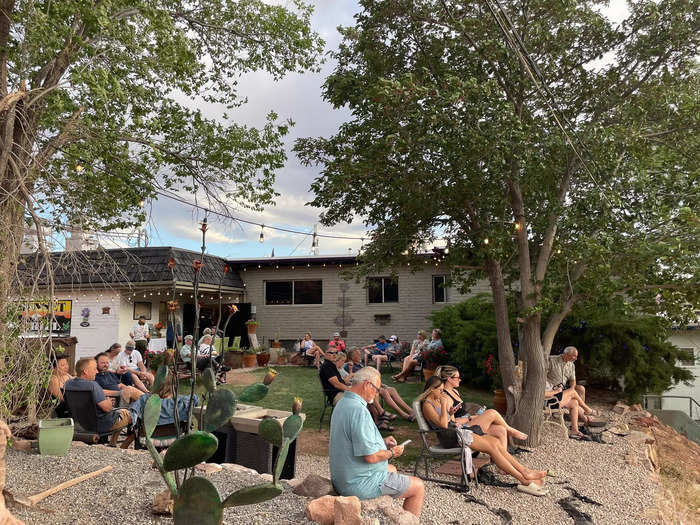
Sunset Grill is a well-known Moab establishment. It's hard to miss as it sits on a hill overlooking the desert town. It's also one of Moab's few fine-dining restaurants, located in the former house of Charles A. Steen, a uranium miner who became a millionaire.
During my short time in Moab, the Sunset Grill was mentioned multiple times by residents and due to its location, I was told it's supposed to be the best place to view a sunset (besides inside the nearby national parks).
On my last night in Moab, I drove up to the restaurant about a half hour before sunset. I arrived and was told there was a 60-minute wait for a table.
By the time I sat down, the sun had fully set and the food wasn't as tasty as I'd hoped. Insider paid for the meal, per our reporting standards.
Next time, I'll watch the sunset in a national park and try a different restaurant in downtown Moab.
I thought a road trip through Utah was one of the best ways to explore the state — even if I wouldn't return to a few places.
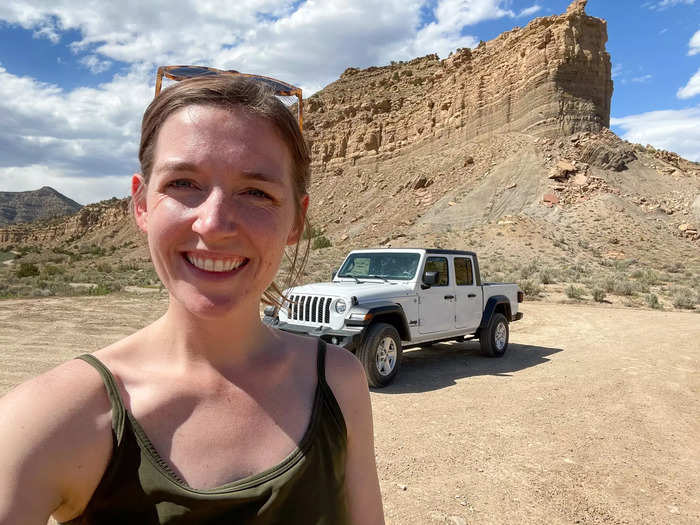
As I dropped off my car and boarded a plane home to Denver, Colorado, I felt like a road trip across Utah was the best way to see the state for the first time.
Being able to stop wherever and whenever is my ideal way to explore. Sure, I wouldn't recommend all of my stops to other travelers, but for the most part, I thought Utah is full of interesting pit stops that are well worth the time and fuel.
Popular Right Now
Popular Keywords
Advertisement